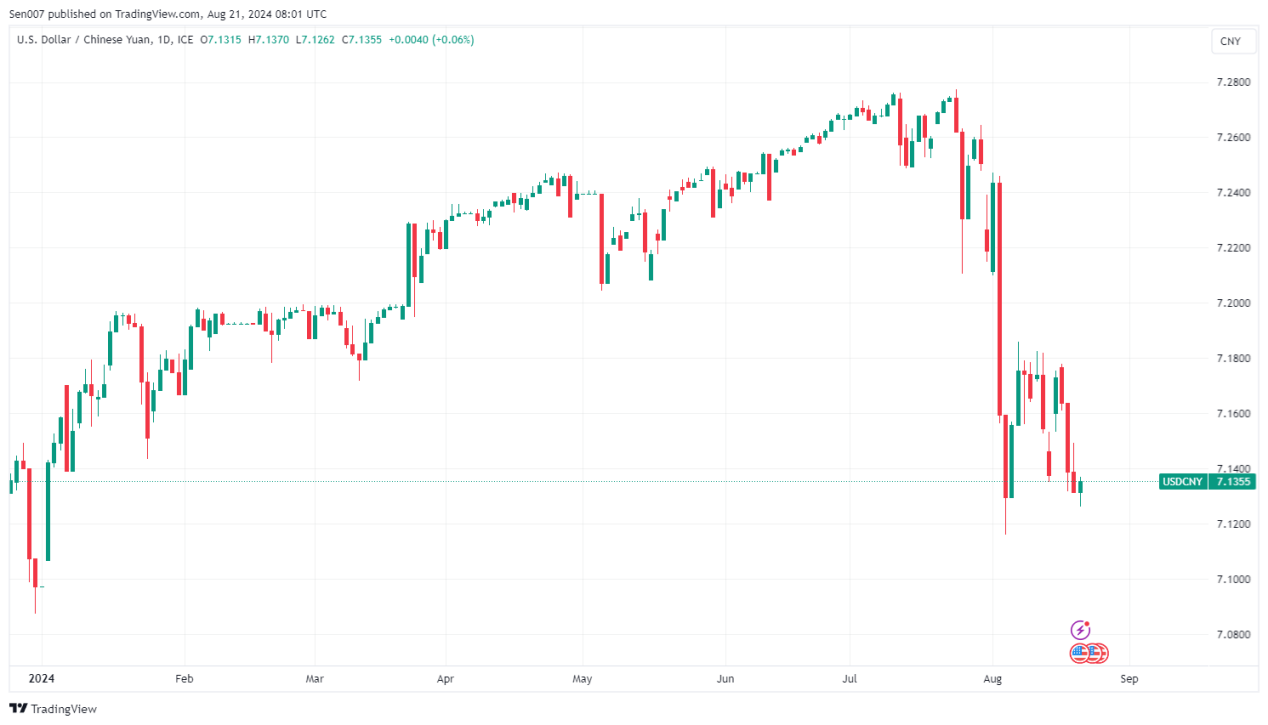Since July, the onshore and offshore RMB exchange rates against the US dollar have rebounded sharply, and hit the high point of this rebound on August 5. Among them, the onshore RMB (CNY) appreciated by 2.3% from the low point on July 24. Although it fell back after the subsequent surge, as of August 20, the RMB exchange rate against the US dollar still appreciated by 2% from July 24. On August 20, the offshore RMB exchange rate against the US dollar also hit a high point on August 5, appreciating by 2.3% from the low point on July 3.
Looking ahead to the future market, will the RMB exchange rate against the US dollar enter an upward channel? We believe that the current RMB exchange rate against the US dollar is a passive appreciation due to the slowdown of the US economy and expectations of interest rate cuts. From the perspective of the interest rate differential between China and the United States, the risk of a sharp depreciation of the RMB has weakened, but in the future, we need to see more signs of improvement in the domestic economy, as well as improvements in capital projects and current projects, before the RMB exchange rate against the US dollar will enter an appreciation cycle. At present, the RMB exchange rate against the US dollar is likely to fluctuate in both directions.
The US economy is slowing down, and the RMB is passively appreciating.
From the published economic data, the US economy has shown obvious signs of weakening, which once triggered market concerns about a US recession. However, judging from indicators such as consumption and the service industry, the risk of a US recession is still very low, and the US dollar has not experienced a liquidity crisis.
The job market has cooled down, but it will not fall into recession. The number of new non-agricultural jobs in July fell sharply to 114,000 month-on-month, and the unemployment rate rose to 4.3% beyond expectations, triggering the "Sam Rule" recession threshold. While the job market has cooled down, the number of layoffs has not cooled down, mainly because the number of employed people is declining, which reflects that the economy is in the early stages of cooling down and has not yet entered a recession.
The employment trends of the US manufacturing and service industries are divergent. On the one hand, there is great pressure on the slowdown of manufacturing employment. Judging from the employment index of the US ISM manufacturing PMI, since the Fed started to raise interest rates in early 2022, the index has shown a downward trend. As of July 2024, the index was 43.4%, a slowdown of 5.9 percentage points from the previous month. On the other hand, employment in the service industry remains resilient. Observing the employment index of the US ISM non-manufacturing PMI, as of July 2024, the index was 51.1%, up 5 percentage points from the previous month.
Against the backdrop of the slowdown in the US economy, the US dollar index fell sharply, the US dollar depreciated significantly against other currencies, and hedge funds' long positions on the US dollar decreased significantly. Data released by the CFTC showed that as of the week of August 13, the fund's net long position in the US dollar was only 18,500 lots, and in the fourth quarter of 2023 it was more than 20,000 lots.
Post time: Sep-14-2024













